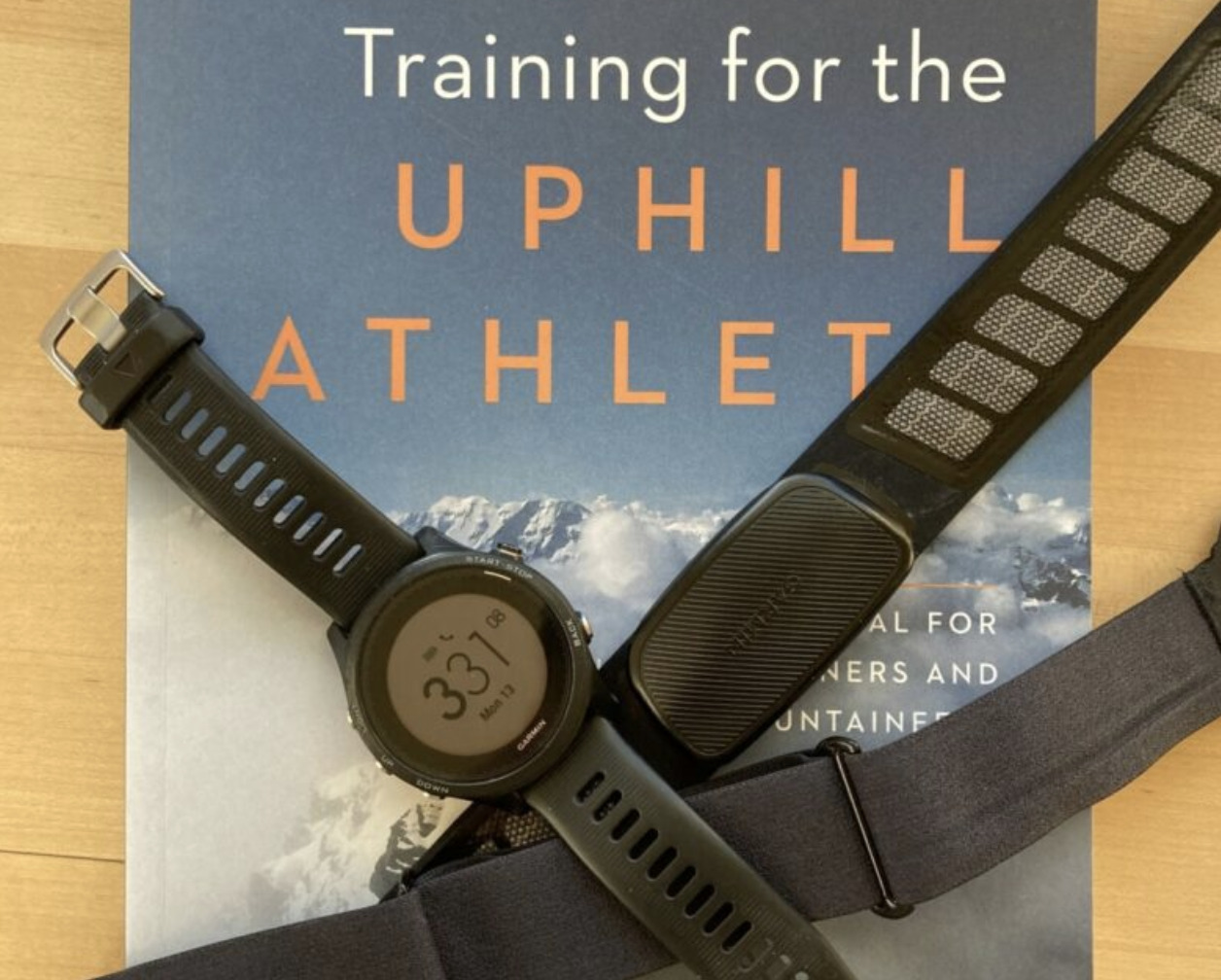The use of heart rate as a proxy to gauge athletic effort level is a simple method that’s been in use for over 50 years. While it is not a perfect metric to gauge intensity, it is accurate enough to guide the user to where they function from a metabolic standpoint without being too cumbersome. Of course, other methods, such as checking blood lactate levels, provide a more accurate picture, but they are far too challenging for most individuals to use in daily training. This comparison of heart rate monitoring technologies will help you make the right choice for setting your heart zones and controlling training intensity,
As an athlete matures in their training, they improve their ability to tie perceived effort to heart rate, often reaching the point where they can very accurately estimate their heart rate. In our experience, most individuals who have never trained using heart rate as a metric have a poor sense of when they are functioning metabolically (i.e.aerobic, anaerobic lactic/alactic), which is why we strongly suggest individuals utilize heart rate as a proxy for intensity, at the least when early in their training career.
Heart Rate Monitoring Technologies
When it comes to using heart rate as a guide to intensity, the quality of the data is paramount. There are two common monitoring technologies on the market for most athletes: Optical sensors in watches or armbands and chest straps.
Optical sensors are a newer technology relative to the chest straps that use photoplethysmography (PPG) to calculate heart rate based on volume fluctuations caused by the heart’s pulsations as blood is pumped to the body’s peripheries.

Chest straps, which use electrocardiogram (ECG) sensors to pick up electrical signals originating from the heart, have been superior for heart rate monitoring and are the suggested method for obtaining quality heart rate data.

PPG technology is improving, but due to significant challenges induced by motion artifacts and ambient light, the accuracy of the data is generally inferior to ECG sensors. Notable improvements in PPG sensors are being made, and it is likely that in the future, they will be near, if not equivalent, in accuracy to chest straps.
Electrocardiogram (ECG) Sensors in Chest Straps
ECG is a relatively old technology, invented in 1903 by Willem Einhoven and Etienne-Jules Marey. The sensors rely on the heart’s electrical activity to accurately measure heart rate. These sensors record the heart’s electrical potential using electrodes, exploiting the electromagnetic fields generated by the heart.
The electrical potential generated by the heart’s activity is measured as a potential difference between electrodes implanted into the chest strap. Once the signals have been acquired by the capacitive sensors used in the chest strap, they can be transmitted to a processing unit such as a watch or smartphone for processing.
Post-processing of the raw signal collected is critical to remove noise and artifacts that can be introduced by movement. Processing of the signal enhances the QRS complex (figure below), which are distinctive patterns representing the depolarization of the ventricles in the heart. This can then be used for R peak-to-peak processing, accurately measuring heart rate. For more on the structure and physiology of the heart and the science of ECG measurements, you can refer to this article: https://imotions.com/blog/learning/research-fundamentals/what-is-ecg/

Optical Sensors in Watches and Arm Bands Using Photoplethysmography (PPG)
PPG is a relatively new technology in the realm of wearables for measuring heart rate. PPG technology in itself has been around in the mainstream of medical devices since the 1980s in the form of pulse oximeters. Japanese bioengineers Takuo Aoyagi and Michio Kishi produced the first pulse oximetry units in 1972. A bit more information on PPG technology can be found here.
PPG is used in watches and armbands to investigate the peripheral effects of cardiac pulsations. The ejection of blood from the heart causes changes in blood volume in the microvascular tissue of the peripheral areas, such as the wrist. A simple optical measurement is taken by utilizing an LED emitting a certain wavelength and a photodetector that can detect the light.
Watches and armbands operate in a reflective mode where the LED and photodetector(PD) are placed on the same side as each other, whereas a device such as a pulse oximeter operates in a transmissive mode with the LED being opposite to the PD (figure below).

Most of the light emitted by the LED wristwatches will be absorbed by the non-pulsatile part of the arterial blood, the venous blood, and other tissues. Absorption of the emitted light depends on the wavelength used, with longer wavelengths, such as red light, penetrating the tissue deeper. Shorter wavelengths, such as green light, penetrate less deeply into the tissue and cannot typically reach the arteries, which means that variations in the intensity of detected light originate from changes in the density of capillaries. These capillaries experience compression during the arterial pulsations since they are positioned between the arteries and the skin. This compression commonly leads to corresponding variations in light absorption.
Green light is also less susceptible to motion artifacts, so you’ll typically see it used in optical devices. Recent major improvements in PPG as a method to accurately monitor heart rate have originated from advances in signal filtering rather than hardware improvements. Red to near-infrared light is superior because it can pass more easily into the body, penetrating deeper into the arteries and veins. This is the primary reason you will typically find red light used in medical settings, such as a pulse oximeter, where the light must pass entirely through the fingertip. As noise filtering technologies are continually improved, red to near-infrared light may be more commonly seen on future consumer wearable devices due to its ability to monitor additional parameters more accurately, such as muscle oxygenation.
The major issue with PPG in assessing heart rate is obtaining a clean, usable signal from the pulsations. Ambient light can negatively affect the signals if the LED and photodetector are not well shielded from outside light sources. Motion artifacts are often present due to the movement of the arm and can present significant challenges in obtaining accurate heart rate data from PPG devices.
Accelerometers are now commonly integrated into watches. These can detect the nature of the movement (e.g., running) and lead to a filter being applied to the signal that can easily remove it as a noise source. This is partly why optical sensors in watches seem to display a better estimate of heart rate during rhythmic activities such as running in comparison to activities such as climbing.
Armband-style optical sensors are often more accurate than their wrist-worn counterparts. This is due to a superior fit that both helps keep the sensor in a fixed position and reduces the extraneous light from entering the device. Additionally, the upper arm is subject to less movement than the wrist, which helps reduce motion artifacts that can negatively impact the quality of the heart rate data.
Comparative Analysis and Applications
ECG sensors in chest straps offer precise heart rate measurements, especially during intense physical activities, but lack the convenience of wearables. PPG sensors in watches offer practical and continuous heart rate tracking for everyday use but have limitations in accuracy during higher-intensity workouts or in scenarios prone to motion artifacts.
Both technologies have distinct advantages and disadvantages. ECG sensors offer precision but are less convenient, while PPG sensors in watches provide ease of use with a compromise on accuracy in certain situations. In most situations, a chest strap is a superior way of monitoring heart rate. During activities where you may not want to even wear a watch, such as climbing, using a chest strap transmitting to either a watch in your pocket or smartphone works quite effectively.
The choice between ECG and PPG sensors depends on the athlete’s specific needs and preferences. For higher quality and precise heart rate measurements, especially for training purposes, ECG sensors in chest straps are preferable. For everyday heart rate tracking and convenience, optical sensors utilizing PPG technology in smartwatches offer a practical and accessible solution.





I have found my polar h10, h7, and Coros watch have all been wildly inaccurate. The H10 is about two years old. The h7, 3 or 4 years old. In your experience, is there a shelf life to these HRM straps? It’s become so frustrating I’m considering stopping tracking HR altogether. Thanks
What method provides better accuracy: ECG chest strap or manual HR measurement with a finger on a neck artery?
I just got HRM-Pro Plus (with Garmin Connect without any wristwatch) and its readings are noticeably lower as compared to manual method.
Matthew: By “watch,” I assume you mean the PPG sensors that measure HR at your wrist. No matter what watch brand or how much you pay, wrist HR monitors are woefully inaccurate in real-world training use. The slightest movement on your wrist messes with the light reflection. Typically, they read high. They do work well for tracking resting HR. The chest straps work great and have a pretty long life. Polar straps seem to last the longest, and Suunto are the most troublesome. Chest straps are accurate and should last several years of almost daily use. Get on that allows you to replace the battery. Wash the strap with hand soap in warm water weekly to keep it clean enough to conduct well.
I hope that helps.
Scott
Yuri:
The ECG chest strap will be more accurate and more repeatable as well because with manual measurement it is very easy to miscount. Say you are counting for 6 seconds. Starting and stopping the count in exactly 6 seconds is almost impossible and if you are off by 1bpm in 6 seconds that is 10bpm in a minute.
Scott.
I own the Polar H10, (ECG), OH1+ (PPG), & Verity Sense (PPG). All have provided consistent readings to the point that I believe their accuracy.
However, placement matters. When I place the OH1+ and Verity Sense on my bicep, I get inaccurate readings about 25% of the time. When I place them on my forearm however, it remains 100% consistent.
My H10 chest strap can get confused by the static electrical discharge of my shirt while running, usually reading high by 20-30 bpm. I live in Utah, which is very arid in the summer and hard to sweat in the winter, leading to the problem.
So the best HRM for me is the Verity Sense placed on my forearm. Unfortunately, I get a wicked tan line, but it is what it is.